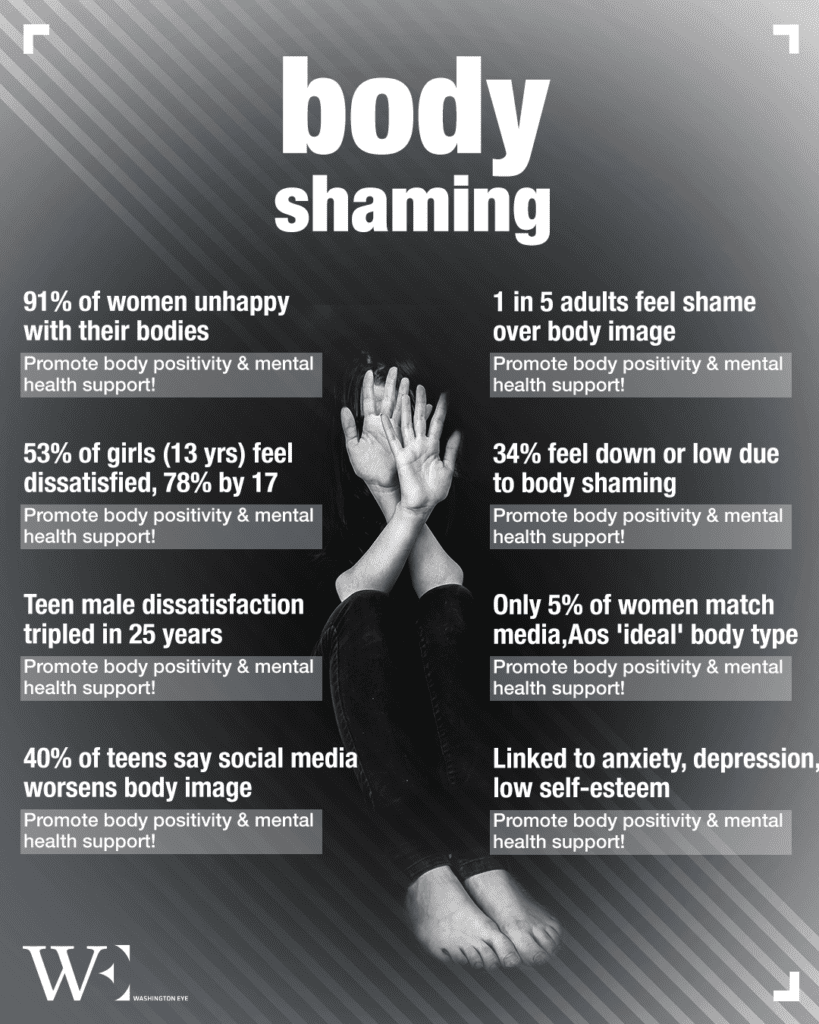The fashion industry has long dictated beauty standards, shifting the cultural perception of the “ideal” body type. While recent years witnessed a growing movement toward body positivity and inclusivity, the industry now appears to be backsliding, re-embracing ultra-thin models. This shift not only undermines years of progress in body acceptance but also reinforces unhealthy beauty standards that perpetuate body shaming and self-esteem issues, particularly among young women.
Fashion has always been cyclical, reflecting broader societal attitudes and trends. In the early 20th century, fuller figures were celebrated, as seen in the glamorous silhouettes of the 1950s, epitomized by Marilyn Monroe. However, the 1960s introduced the waif-like frame popularized by Twiggy, a stark contrast that defined an era obsessed with thinness. The heroin-chic aesthetic of the 1990s, championed by models like Kate Moss, further glorified extreme thinness, normalizing a look often associated with unhealthy lifestyle choices.
As pushback against these restrictive beauty ideals gained momentum in the 2010s, the industry made a visible effort to be more inclusive. Plus-size models like Ashley Graham and campaigns advocating for body diversity, such as Aerie’s #AerieREAL, gained popularity. The introduction of different body shapes on runways and in advertisements signaled a step toward dismantling the rigid standards that had excluded so many.
The Return of the Ultra-Thin Ideal
However, the fashion industry’s recent pivot back toward skinnier models suggests a regression. The resurgence of size-zero models in high-fashion campaigns and runway shows indicates a troubling trend. The resurgence of the “heroin-chic” aesthetic, characterized by extremely thin bodies and sharp cheekbones, is concerning. Fashion Week in 2023 and 2024 saw a noticeable decline in plus-size representation, raising alarm bells for advocates of body inclusivity.
Moreover, social media influencers and celebrities are reinforcing this shift. The widespread use of weight-loss drugs like Ozempic and the glorification of extreme weight loss on platforms like TikTok and Instagram further perpetuate the notion that thinner is always better. While these trends may appeal to high-fashion’s preference for a particular silhouette, they send damaging messages to impressionable audiences.
The Impact of Body Shaming and Unrealistic Standards
Body shaming has long been a dark undercurrent in fashion. The resurgence of ultra-thin models reignites harmful comparisons, making individuals—especially young women—feel pressured to conform to unrealistic standards. Studies have consistently linked exposure to unattainable beauty ideals with increased rates of eating disorders, depression, and anxiety. The return of size-zero models not only alienates plus-size individuals but also shames those who do not naturally conform to these shrinking standards. Social media, once a platform for body positivity movements, now often fuels insecurities by promoting heavily edited and filtered images of impossibly slim physiques. The message is clear: to be beautiful, one must be thin.
Despite claims of inclusivity, fashion brands continue to cater predominantly to smaller sizes. Retailers frequently use body positivity as a marketing tool while failing to offer diverse
sizing in their collections. This hypocrisy suggests that the industry’s flirtation with inclusivity was more of a trend than a genuine commitment to change. Luxury brands, in particular, have been slow to embrace body diversity. Many high-end designers still craft garments exclusively for sample sizes, reinforcing the notion that high fashion is only for the thin. The lack of representation in campaigns and runway shows further perpetuates this exclusivity.
The Need for Lasting Change
If the fashion industry is to genuinely support body positivity, it must commit to permanent changes rather than treating diversity as a fleeting trend. Designers, brands, and media outlets hold immense power in shaping societal standards of beauty. They must recognize that embracing body diversity is not just about appeasing a movement but about fostering a healthier relationship with body image for future generations. Consumers also play a role in pushing for change. Supporting brands that prioritize inclusivity, challenging unrealistic beauty ideals, and promoting diverse representations of beauty on social media can contribute to a more accepting culture.
The industry’s return to skinnier models may reflect nostalgia for past aesthetics, but it also risks undoing the progress made toward body acceptance. If fashion continues to prioritize extreme thinness, it will send a damaging message to millions who struggle with body image. Inclusivity should not be a temporary movement, it must be the new standard. Fashion has the potential to celebrate all bodies. It is time for the industry to recognize that beauty is not confined to a specific size. Only then can we create a world where everyone feels seen, valued, and worthy regardless of the number on the scale.
















